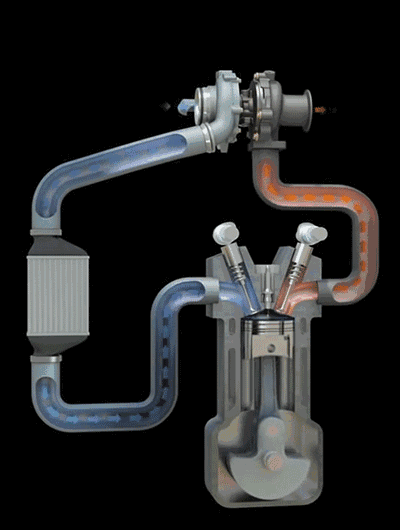How turbochargers work
2020-04-01
The turbo system is one of the most common supercharging systems in supercharged engines. If in the same unit time, more air and fuel mixture can be forced into the cylinder (combustion chamber) for compression and explosion action (the engine with small displacement can "inhale" and the same with large displacement Air, improving volumetric efficiency), can produce greater power output at the same speed than a naturally aspirated engine. The situation is like you take an electric fan and blow it into the cylinder, you just inject the wind into it, so that the amount of air in it is increased to get more horsepower, but the fan is not an electric motor, but the exhaust gas from the engine. drive.

In general, after cooperating with such a "forced intake" action, the engine can at least increase the extra power by 30% -40%. The amazing effect is the reason why the turbocharger is so addictive. What's more, obtaining perfect combustion efficiency and greatly improving power are originally the greatest value that turbo pressure systems can provide to vehicles.
So how does a turbocharger work?
First, the exhaust gas from the engine pushes the turbine impeller on the exhaust side of the turbine and rotates it. As a result, the compressor impeller on the other side connected to it can also be driven to rotate at the same time. Therefore, the compressor impeller can forcibly inhale air from the air inlet, and after the blades are compressed by the rotation of the blades, they enter the compression channel with a smaller and smaller diameter for secondary compression. The temperature of the compressed air will be higher than that of the direct intake air. High, it needs to be cooled by an intercooler before being injected into the cylinder for combustion. This repetition is the working principle of the turbocharger.